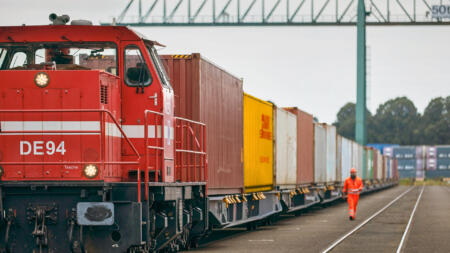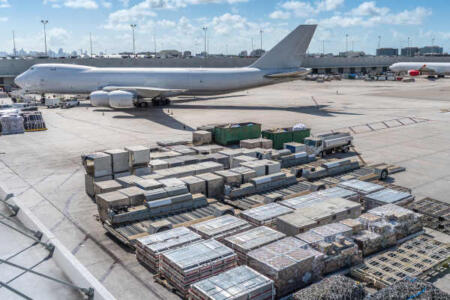India faces challenges in international trade due to rising geopolitical tensions. From the war in Ukraine to increased trade protectionism, these disruptions pose significant hurdles for Indian businesses.
India, a global powerhouse with a burgeoning economy, is no stranger to the complexities of international trade. However, the recent surge in geopolitical tensions has cast a shadow on the nation’s import and export landscape. From the ongoing war in Ukraine to rising trade protectionism, these global disruptions pose significant challenges for Indian businesses.
The global landscape: A web of disruptions
The war in Ukraine has emerged as a major disruptor of global trade. The conflict has triggered a series of cascading effects, impacting energy prices, commodity supplies, and overall economic growth. A slowdown in the global economy translates into decreased demand for exports across the board. This, coupled with rising energy and commodity prices, creates a double whammy for India. While import costs surge, the demand for Indian exports might decline as international businesses tighten their spending.
The Federation of Indian Export Organizations (FIEO) recently reported a decline in India’s outbound shipments in 2023-24. While various factors contribute to this decline, global uncertainties caused by the ongoing war in Ukraine are widely considered a major influence.
Stricter Non-Tariff Measures (NTMs)
India’s implementation of stringent NTMs compared to China poses a barrier to Indian exports, as perceived by some Bangladeshi stakeholders. These regulatory measures, involving additional documentation and inspections, create delays and increase costs for Bangladeshi businesses importing from India. Such hurdles underscore the need for greater harmonisation and cooperation in trade policies.
Competition and duty benefits
India and Bangladesh, both major exporters of similar products such as garments, often find themselves in competition. Additionally, China’s provision of duty benefits to Bangladesh on various products further tilts the scales, making Chinese imports more attractive for Bangladeshi importers. This competitive landscape underscores the importance of strategic trade policies and partnerships to maintain India’s export competitiveness.
Disruptions in supply chains: A domino effect
Beyond economic ramifications, the war in Ukraine has significantly disrupted global supply chains. The intricate network of transportation and logistics has been thrown into disarray, impacting the flow of goods and raw materials. This can lead to higher import costs and shortages for Indian businesses, hindering production and potentially impacting their competitiveness in the international market.
Case in point: Food safety concerns and trade bans
Amid growing concerns over the quality of Indian spices, international trade analysts urge immediate action from exporters. Despite India’s spice export value of $4.25 billion in FY24, recent scrutiny from importing countries raises alarms. Delays in addressing quality issues could lead to substantial losses, with potential downturns of $2.17 billion to $2.5 billion if China and the European Union impose similar restrictions. Bans by Hong Kong and Singapore, coupled with pesticide contamination controversies involving major Indian brands like MDH and Everest, highlight the urgency. These developments significantly impact Indian trade, emphasising the need for exporters to prioritise transparency and resolve quality issues to maintain India’s position in the global spice market.
Steel exports and the carbon tax dilemma
The proposed carbon tax by the European Union on steel imports presents another challenge for Indian steel exports. India argues that such measures are disguised trade barriers that discriminate against developing economies and could significantly impact its steel industry’s competitiveness in the global market.
Navigating the storm: Strategies for a resilient India
Despite the challenges, India has the potential to navigate these geopolitical headwinds and emerge stronger. Here are some key strategies the nation can adopt:
- Diversification of Trade Partners: Overreliance on a few major trading partners can leave India vulnerable to disruptions. By actively engaging with new markets and forging stronger trade ties with regional partners like ASEAN countries, India can mitigate the impact of fluctuations in any single market.
- Focus on Regional Trade Agreements: Regional trade agreements offer preferential trade terms and reduced tariffs for member countries. Actively pursuing and maximising benefits from these agreements can provide a significant boost to Indian exports.
- Strengthening Domestic Manufacturing: By investing in infrastructure and promoting domestic manufacturing capabilities, India can reduce its dependence on imports for critical materials and finished products. This will not only enhance self-sufficiency but also create employment opportunities within the nation.
- Embracing Innovation and Technology: Technology plays a crucial role in streamlining logistics, optimising supply chains, and facilitating international trade. By embracing digital solutions and investing in advanced logistics infrastructure, India can improve efficiency and reduce costs associated with trade activities.
- Upholding High Manufacturing Standards: Recent incidents like the ban on spices highlight the importance of strict quality control measures. By adhering to international standards and maintaining high manufacturing hygiene practices, India can safeguard its reputation as a reliable exporter and prevent future disruptions.
- Enhancing Trade Policy Agility: In a rapidly evolving geopolitical landscape, India must adopt a more agile trade policy framework. This involves continuously evaluating international developments and adapting trade strategies to seize emerging opportunities or mitigate potential risks.
Beyond the headlines: Additional considerations
While the war in Ukraine and trade protectionism measures are major concerns, other geopolitical developments warrant consideration when analysing India’s trade future.
- US-China Tensions: The ongoing trade tensions between the US and China can have a ripple effect on India. As these two economic giants grapple with each other, opportunities may emerge for India to fill the gaps in their respective supply chains. However, escalating tensions could also lead to further disruptions in the global trade environment.
- South Asian Trade Bloc: The potential revival of a South Asian trade bloc involving India, Pakistan, Bangladesh, Sri Lanka, Nepal, Bhutan, and the Maldives could unlock significant economic potential within the region. This could be a significant step towards regional integration and boosting trade within South Asia.
Looking ahead: A collective effort
The road ahead for India’s trade is likely to be riddled with challenges. However, by adopting a multi-pronged approach that focuses on diversification, regional cooperation, domestic manufacturing, innovation, and a commitment to quality standards, India can weather the storm of geopolitical tensions. This requires a collaborative effort from the government, industry leaders, and exporters themselves. By working together, India can build a more resilient and future-proof trade ecosystem that fosters sustainable economic growth in the years to come.











